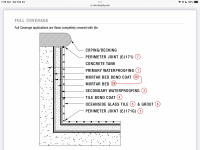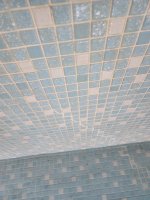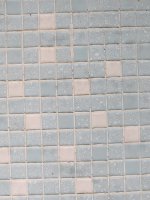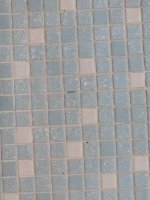Hey all,
It's looking like finally time to address the water loss in our beautiful 20,000 gallon mosaic tile lined indoor pool. What used to be a small water loss has started to approach a few inches a day (clearly too much).
This leads us to the following options:
Option 1 - Try and identify where the leak is (leaks are) and have the tile removed, crack fixed, and new tile patched in. Pros: likely the least expensive. Cons: may not fully solve the problem if there are multiple leaks, problem may also come back.
Option 2 - Install a commercial (thick, multi-layer) liner. Pros: definitely will provide a long term waterproof membrane. Cons: definitely not inexpensive, no more beautiful tile.
Option 3 - Complete renovation of the pool - strip all the tiles, fix cracks, waterproof the shell, install new tile and grout. Pros: beautiful tile pool. Cons: very expensive, and concern the shell cracks may come back?
Any thoughts on our options? We have been in this house eight years now, the pool is 50 years old. This is indeed our forever home, but the cost of Option 3, and the concern that the problem may come back have us reluctant to go that route.
Your opinions and experience in similar cases are highly valued!
It's looking like finally time to address the water loss in our beautiful 20,000 gallon mosaic tile lined indoor pool. What used to be a small water loss has started to approach a few inches a day (clearly too much).
This leads us to the following options:
Option 1 - Try and identify where the leak is (leaks are) and have the tile removed, crack fixed, and new tile patched in. Pros: likely the least expensive. Cons: may not fully solve the problem if there are multiple leaks, problem may also come back.
Option 2 - Install a commercial (thick, multi-layer) liner. Pros: definitely will provide a long term waterproof membrane. Cons: definitely not inexpensive, no more beautiful tile.
Option 3 - Complete renovation of the pool - strip all the tiles, fix cracks, waterproof the shell, install new tile and grout. Pros: beautiful tile pool. Cons: very expensive, and concern the shell cracks may come back?
Any thoughts on our options? We have been in this house eight years now, the pool is 50 years old. This is indeed our forever home, but the cost of Option 3, and the concern that the problem may come back have us reluctant to go that route.
Your opinions and experience in similar cases are highly valued!








